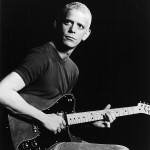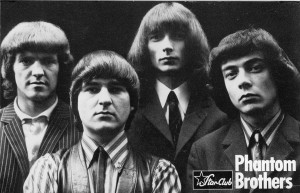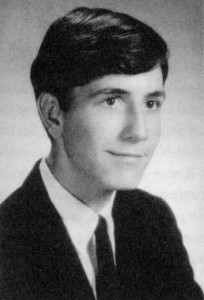-
Featured News
Patti Smith Upcoming Tour for 50th Anniversary of Horses
 By Harvey Kubernik
“Horses was like the first cannon blast in a war – frightening and disorienting. I mean, she was so unlike the FM radio terrain in every way. She was literate, aggress
By Harvey Kubernik
“Horses was like the first cannon blast in a war – frightening and disorienting. I mean, she was so unlike the FM radio terrain in every way. She was literate, aggress -
Featured Articles
Chasing the White Light: Lou Reed, the Telepathic Secretary and Metal Machine Music
 By David Holzer
Fifty years ago, Lou Reed released Transformer. In among “Walk on the Wild Side,” “Make Up” and “Vicious,” cuts that would launch a cartoon Rock N Roll Animal pers
By David Holzer
Fifty years ago, Lou Reed released Transformer. In among “Walk on the Wild Side,” “Make Up” and “Vicious,” cuts that would launch a cartoon Rock N Roll Animal pers -
Growing Up in the Dark Ages: The Early Years of Lester Bangs
By Mike Stax (with Gary Rachac)
AUTHOR’S NOTE: This story was written back in 1996. At the time there had been very little written about the life of Lester Bangs, and, being a San Diego native, I was particularly intrigued by his early years growing up in El Cajon (in San Diego’s East County) so began digging up what I could on the period of Lester’s life. My friend Gary Rachac had been close to Lester back then, and through him I was able to contact many of Lester’s other San Diego area friends and associates like Roger Anderson, Milton Wyatt, Jack Butler, and Jerry Raney. I also spoke to Richard Meltzer, who gave me his perspective on Lester and his work.
The story was originally intended for publication in the San Diego Reader, but when that didn’t pan out, I shelved it. When Jim DeRogatis began work on his Lester Bangs biography, Let It Blurt (published in 2000), I gave him permission to use the unpublished manuscript for his research. Much of it though appears here for the first time.
“WELL, I GUESS I’LL JUST GO BACK AND SELL SHOES IN SAN DIEGO!!!”
It’s early 1981 in New York City and Lester Bangs —writer, rock critic, ex-shoe salesman, and, for now at least, musician —is blasted out of his mind and far from pleased with the way his writer friends Richard Meltzer and Nick Tosches are responding to the advance tape of his new musical work, Jook Savages on the Brazos.
Bert Jansch – 1943-2011
by Alan Bisbort
“The Death of Bert Jansch” sounds like the name of a traditional folk song that Jansch himself might have resurrected on one of his early solo albums. Sadly, this imaginary song came true on October 5, 2011, when the legendary musician—whom Neil Young likened to “Jimi Hendrix on the acoustic guitar” and whose cross-generational influence is admitted by the likes of Keith Richards, Jimmy Page, Donovan, Johnny Marr, Joanna Newsom, Beth Orton and Devendra Banhart—died at age 67 after a battle with cancer. (more…)
The Phantom Brothers – Germany’s Wildest Beat Group
An Interview with Olgerd Wokock by Mike Stax, with Anja Dixson
(This article was originally published in UGLY THINGS #24)

The Phantom Brothers, 1965. L to R: Rudi Kruger, Horst Kruger, Olgerd Wokock, Wolfgang Wokock (Photo by Astrid Kirchherr)
In my personal Sixties rock’n'roll pantheon Germany’s Phantom Brothers occupy a special place near the very top of the heap. I actually became a fan of the group before I’d even heard a note of their music, my enthusiasm based entirely on a set of photos in the German pictorial book, The Beat Age. Surly and stone-faced, decked out in leather and stripes, and with a lead singer with hair down past his shoulders—in early 1965!—they exuded style and attitude. And the live shots, with that singer shaking maracas and tambourine together, and a guitar player windmilling his arm Townshend-style, suggested a sound that couldn’t be anything less than flat-out WILD, man.
